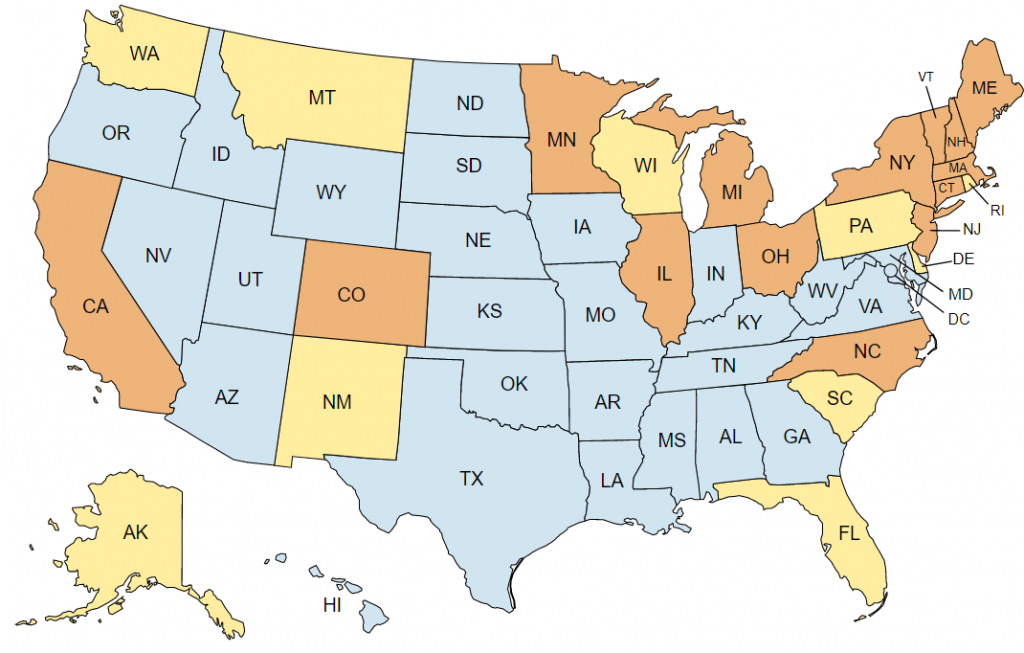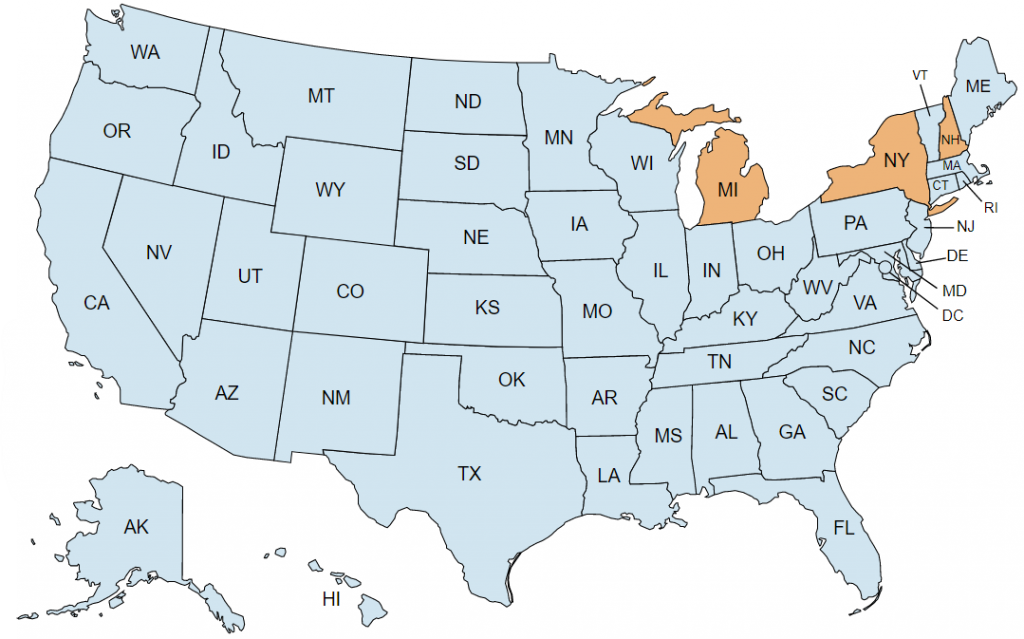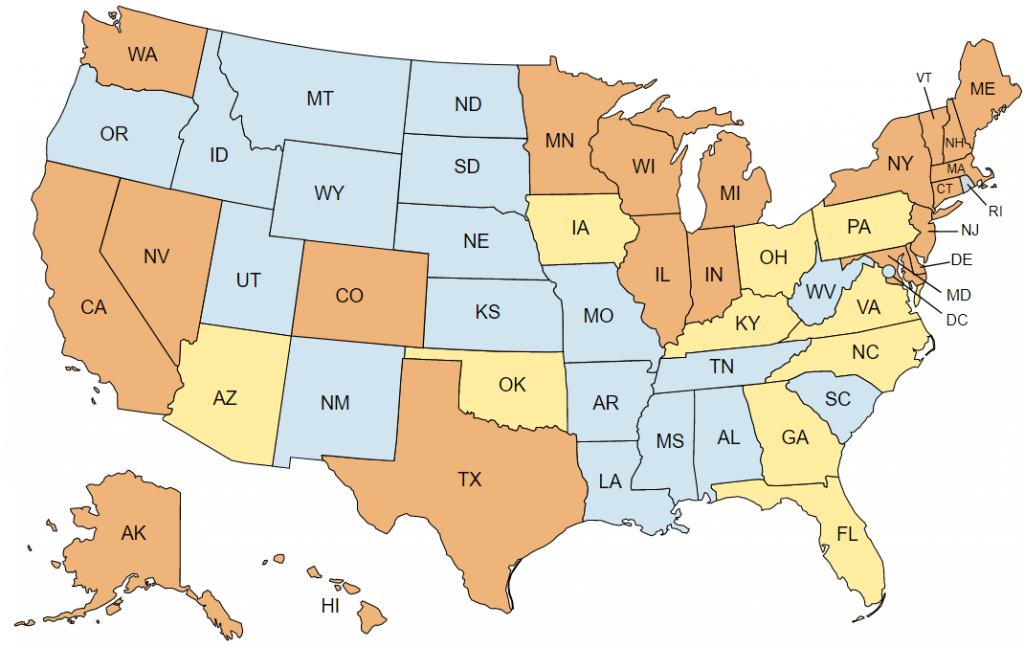PFAS: State-by-State Regulatory Update
Posted: July 22nd, 2021
Authors: Kayla T.
Given the current lack of all-encompassing federal environmental regulation around per- and polyfluoroalkyl substances (PFAS), states are taking it upon themselves to set their own standards amid growing public scrutiny. With proposed house bills, rejections of bills, and other PFAS news popping up seemingly every day, it can be difficult to keep track of the regulatory climate and obligations. ALL4 is here to help.
Note: This information is current as of July 16, 2021.
First to level-set, the following are several key PFAS regulations currently at the federal level:
- Water
- Drinking Water: Health Advisory Level (HAL) of 70 parts per trillion (ppt) for perfluorooctanoic acid (PFOA) and perfluorooctane sulfonate (PFOS), combined. HALs are not enforceable. Note that U.S. Environmental Protection Agency (U.S. EPA) is moving forward to implement enforceable drinking water maximum contaminant levels (MCLs) for PFOA and PFOS, but a limit does not exist at this time.
- Air
- There are no proposed or promulgated standards at this time.
- Other
- Toxic Release Inventory (TRI): Section 7321 of the National Defense Authorization Act for Fiscal Year 2020 (NDAA), which was passed in December 2019, immediately added 172 per- and polyfluoroalkyl substances (PFAS) to the list of chemicals covered by the TRI and provided a framework for additional PFAS to be added to TRI on an annual basis. This list became effective January 1, 2020, with the first PFAS Form Rs required by July 1, 2021. Three additional PFAS have been added to the TRI list in 2021, bringing the current total to 175.
- Aqueous Film Forming Foam (AFFF): The Department of Defense (DOD) is phasing out of AFFF and prohibition of the use of AFFF during training exercises at military sites.
- Significant New Use Rule (SNUR): Finalized for PFOA and PFOA-related chemicals. The SNUR requires notification from anyone who begins or resumes the manufacturing, including importing, or processing of these chemicals. The SNUR addresses risks from products like carpets, furniture, electronics, and household appliances.
- Comprehensive Environmental Response, Compensation, and Liability Act (CERCLA): Proposing to designate PFOA and PFOS as “hazardous substances”.
The following maps provide a high-level summary of what states are currently doing in terms of water, air, and other (e.g., AFFF, waste, consumer goods, remediation) PFAS-related regulations. This does not include any litigation or consent decrees.
WATER REGULATIONS
The color key is as follows:
Highlights:
- California: Drinking water notification levels for PFOS (6.5 ppt), PFOA (5.1 ppt), and perfluorobutane sulfonic acid (PFBS) (500 ppt). Drinking water response levels for PFOS (40 ppt), PFOA (10 ppt), and PFBS (5,000 ppt). The State Water Board has also requested notification levels for perfluorohexane sulfonic acid (PFHxS), perfluorohexanoic acid (PFHxA), perfluoroheptanoic acid (PFHpA), perfluorononanoic acid (PFNA), perfluorodecanoic acid (PFDA), and 4,8-dioxia-3H-perflourononanoic acid (ADONA).
- Colorado: Surface water/groundwater translation levels for PFOA (and parent constituents), PFOS (and parent constituents), and PFNA (70 ppt, combined), PFHxS (700 ppt), and PFBS (400,000 ppt). The policy also includes monitoring and permitting considerations for entities that discharge to state waters.
- Connecticut: Drinking water action levels for PFOA, PFOS, PFNA, PFHxS, and PFHpA (70 ppt, combined).
- Illinois: Health advisories for PFBS (2,100 ppt), PFHxS (140 ppt), PFOS (14 ppt), PFOA (2 ppt), and PFHxA (560,000 ppt). Illinois is also in the process of introducing groundwater quality standards and evaluating the need to introduce drinking water MCLs for several PFAS.
- Maine: Interim drinking water MCLs for PFOS, PFOA, PFHpA, PFNA, PFHxS, and PFDA (20 ppt, combined) and monitoring requirements.
- Massachusetts: Drinking water MCLs for PFOS, PFOA, PFHxS, PFNA, PFHpA, and PFDA (20 ppt, combined). Massachusetts is also introducing monitoring obligations for these PFAS under National Pollutant Discharge Elimination System (NPDES).
- Michigan: Drinking water MCLs for PFNA (6 ppt), PFOA (8 ppt), PFHxA (400,000 ppt), PFOS (16 ppt), PFHxS (51 ppt), PFBS (420 ppt), and hexafluoropropylene oxide dimer acid (HFPO-DA) (370 ppt).
- Minnesota: Health advisories for PFOS (15 ppt), PFOA (35 ppt), PFHxS (47 ppt), PFBS (2,000 ppt), and PFBA (7,000 ppt).
- New Hampshire: Drinking water MCLs and ambient groundwater quality standards (AGQS) for PFOA (12 ppt), PFOS (15 ppt), PFNA (11 ppt), and PFHxS (18 ppt).
- New Jersey: Drinking water MCLs and groundwater quality standards for PFNA (13 ppt), PFOA (14 ppt), and PFOS (13 ppt).
- New York: Drinking water MCLs for PFOA (10 ppt) and PFOS (10 ppt).
- North Carolina: Drinking water health goal for GenX (150 ppt). Proposed groundwater quality standard for PFOA and PFOS (70 ppt, combined).
- Ohio: Drinking water action levels for PFOA and PFOS (70 ppt, combined), GenX (700 ppt), PFBS (140,000 ppt), PFHxS (140 ppt), and PFNA (21 ppt).
- Pennsylvania: Proposing (pre-draft rule) drinking water MCLs for PFOA (14 ppt) and PFOS (18 ppt).
- Vermont: Drinking water MCLs for PFOS, PFOA, PFHxS, PFNA, and PFHpA (20 ppt, combined).
- Wisconsin: Proposing drinking water MCL and groundwater standards for PFOA and PFOS (20 ppt, combined). Additional regulations in progress to address 16 other PFAS.
AIR REGULATIONS
The color key is as follows:
- Michigan: Air toxics rule set allowable concentration levels (ACLs) for PFOA and PFOS of 0.07 micrograms per cubic meter (µg/m³), 24-hour average, individually or combined. New or modified sources that are required to obtain an air use permit are subject to Michigan’s air toxics rules, unless otherwise exempt.
- New Hampshire: Air toxics rule set ambient air limits (AAL) for ammonium perfluorooctanoate (APFO) of 0.05 µg/m³ (24-hour) and 0.024 µg/m³ (annual). New, modified, and existing processes are subject to the air toxics rule. In addition, New Hampshire promulgated a Best Available Control Technology (BACT) requirement for any facility that may cause or contribute to an ambient groundwater quality standard (AGQS) or surface water quality standard (SWQS) exceedance of perfluorinated compounds (PFCs) or precursors, which includes certain PFAS.
- New York: Air toxics program set an annual guideline concentration (AGC) for PFOA of 0.0053 µg/m3. Any facility regulated under Part 212 must evaluate air contaminants, including PFOA, as applicable.
OTHER REGULATIONS
The color key is as follows:
Highlights:
- California:
- Proposition 65: Warning required for PFOA/PFOS.
- AFFF: Reporting, notification, usage, and manufacturer requirements.
- Consumer Goods: Notification for personal protective equipment (PPE) containing PFAS. Ban on cosmetics containing PFOA or PFOS. Proposal to regulate plant-fiber-based food packaging containing PFAS.
- Illinois:
- AFFF: Usage and manufacturer requirements.
- Incineration: Proposed bill to prohibit incineration of PFAS.
- Maine:
- Remediation: Soil remedial action screening levels and water remedial action guidelines for PFBS, PFOS, and PFOA.
- AFFF: Proposed reporting, notification, and usage requirements.
- Consumer Goods: Prohibition of PFAS additions in packaging. Reporting requirements for PFOS-containing children’s products. Prohibition of sale of any product containing PFAS that were intentionally added.
- New York:
- Hazardous Substances: PFOS and PFOA classified as hazardous substances.
- AFFF: Usage, notification, and incineration requirements.
- Consumer Goods: Prohibition of PFAS additions in food packaging materials. Notification requirements for PFOS- and PFOA-containing children’s products.
- Pennsylvania
- Biosolids: Revised Biosolids General Permits to include PFOA and PFOS monitoring requirements (pre-draft issued/public comment anticipated Fall 2021)
- Texas:
- Remediation: Protective concentration levels (PCLs) set for 16 PFAS in groundwater and soil.
- Washington:
- AFFF: Usage, notification, and manufacturer requirements.
- Consumer Goods: Notification for PPE containing PFAS. Prohibition of PFAS additions in food packaging materials.
ALL4 continues to track the regulatory movements and maintains a database of current state PFAS activity. If you have any questions about your specific state or would like any additional information, please reach out to Kayla Turney at kturney@all4inc.com.







